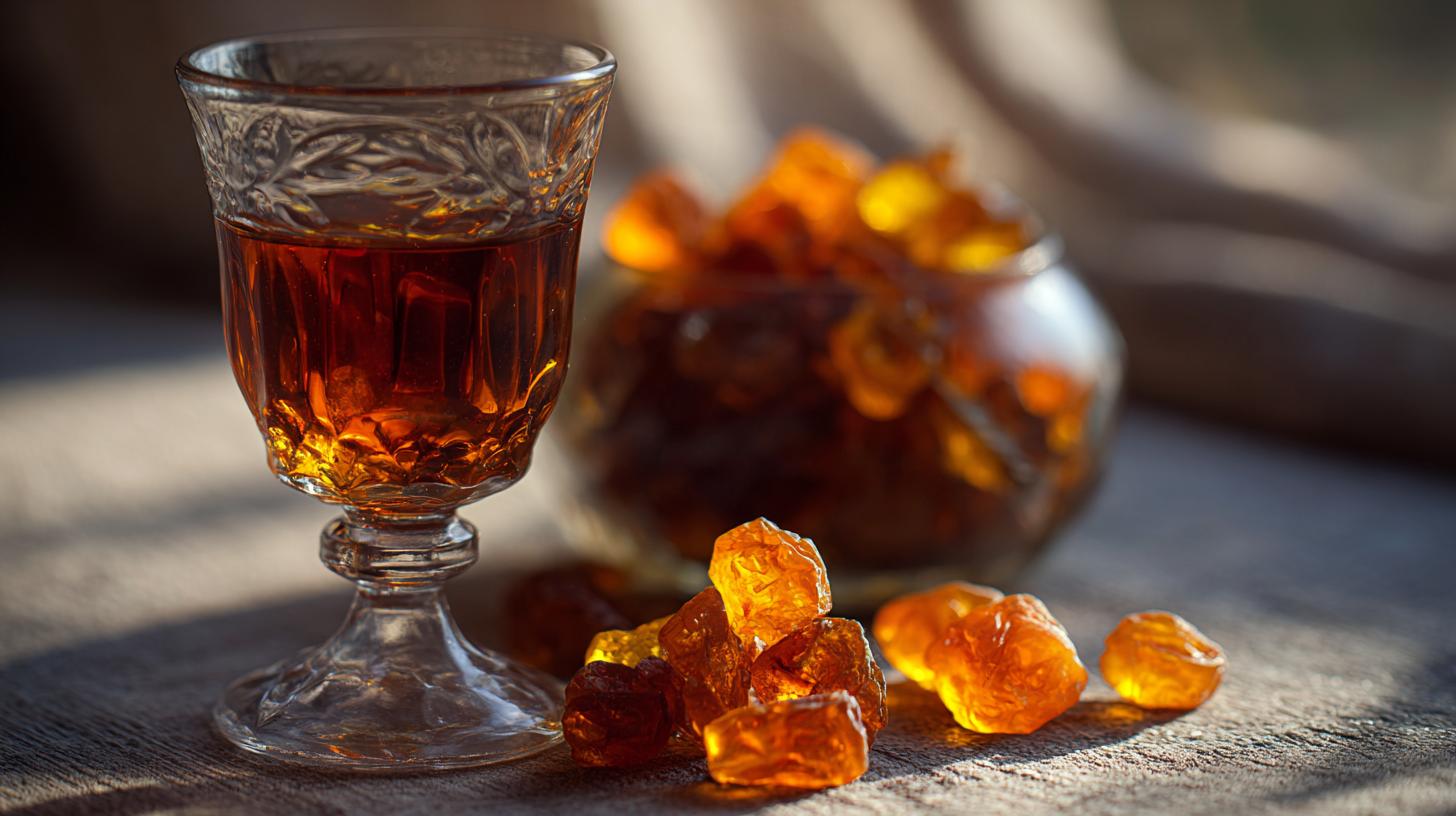If you have ever ventured into the rich and ancient world of wine, chances are you have come across the terms “amber wine,” “orange wine,” or “natural wine.” These intriguing expressions often raise questions about what exactly sets these wines apart from the conventional red, white, or rosé varieties that most people are familiar with. Amber wine from Georgia, in particular, has gathered attention because of its unique production methods, rich cultural history, and distinctive taste. In this article, we will explore what amber wine from Georgia is, how it is made, why it is often referred to as orange wine, and how it fits into the broader category of natural wine.
The Origins of Amber Wine in Georgia

To understand amber wine from Georgia, it is essential first to look at the country’s history with winemaking. Georgia is often considered the cradle of wine, with archaeological evidence tracing its wine production back over 8,000 years. Georgian winemaking traditions are not only ancient but also unique, having remained largely unchanged for millennia.
In the traditional Georgian method, grapes are fermented with their skins and sometimes stems in large clay vessels known as qvevris (or kvevris). These vessels are buried underground and provide a stable environment for fermentation. This ancient technique is still practiced today and is the foundation of what makes amber wine from Georgia distinct.
Amber wine is essentially white wine made using red wine techniques. Normally, white wines are made by pressing the juice off the skins before fermentation, whereas amber wine embraces prolonged skin contact, which gives the wine a distinctive amber or orange hue. This skin contact not only alters the color but also enhances the wine’s flavor complexity, tannin structure, and mouthfeel.
Amber Wine vs. Orange Wine: Are They the Same?
Amber wine and orange wine are terms often used interchangeably, but there is subtle nuance based on context and tradition. In Georgia, the term “amber wine” is more commonly used to describe white wines fermented with skin contact inside qvevris. Outside Georgia and especially in Western wine communities, “orange wine” is a prevalent name for wines made by prolonged skin contact with white grapes, regardless of the vessel or geographical origin.
Both terms describe wines derived from white grapes that have extended skin maceration, yielding wines with distinctive colorations that span from golden yellow to deep amber or bright orange. Because of these shared characteristics, wine enthusiasts usually classify amber wine Georgia style as part of the broader category of orange wines.
The Traditional Georgian Qvevri Winemaking Method
Understanding amber wine from Georgia requires insight into the qvevri winemaking process since it embodies the country’s approach to natural wine production. The qvevri method is not only a means of fermentation but is an art form, intertwined with Georgia’s cultural identity.
What Is a Qvevri?
A qvevri is a large, egg-shaped clay vessel used to ferment, store, and age wine. Typically, these vessels can hold anywhere from 20 liters to several thousand liters and are buried underground to maintain a consistent temperature throughout fermentation and maturation. The design of the qvevri allows the wine to develop slowly and harmoniously, while the clay allows for micro-oxygenation, enhancing the wine’s texture.
Steps in the Qvevri Winemaking Process
- Harvesting: Grapes are picked when ripe, usually by hand to preserve quality.
- Crushing: The grapes, including skins, seeds, and sometimes stems, are crushed gently.
- Loading into Qvevri: The crushed grape must is poured into the qvevri, which is then sealed.
- Fermentation: Natural yeast present on the grapes or in the environment begins fermentation.
- Maceration: The wine remains in contact with grape skins and solids for weeks to months – this is key for amber wine’s color and tannins.
- Sealing and Aging: After fermentation, the qvevri is sealed, and the wine matures underground for several months to years.
- Racking and Bottling: Finally, the wine is extracted carefully from the qvevri, racked, and bottled, often with minimal filtration or sulfites.
This process emphasizes minimal intervention and a close connection to traditional methods, placing amber wine Georgia style firmly within the umbrella of natural wine, which values authenticity and terroir expression.
What Sets Amber Wine Georgia Apart from Other Wines?
Amber wine from Georgia stands out not only because of its color and production methods but also due to its complex flavors and connection to ancient tradition. Here are some factors that define it:
Distinctive Color and Texture
Amber wine’s color ranges from deep gold to tawny amber hues, depending on the grape variety and length of skin contact. Unlike typical white wines, which are usually clear or pale yellow, amber wines carry a warm, inviting glow that hints at their complexity.
The skin contact process contributes tannins and phenolic compounds, which lend the wine a richer texture and structure. These wines often have a “chewy” mouthfeel uncommon in standard white wines, making sipping an engaging experience.
Complex Aromatics and Flavors
Amber wines often feature a complex bouquet that can include notes of dried fruits, nuts, honey, tea, apricot, and spices. The flavors range from savory to slightly bitter, with some minerality and earthy undertones that reflect the natural winemaking process and the terroir.
Because of the fermentation and aging inside qvevris, amber wine carries a rustic and authentic profile, often described as “funky” in a positive way by natural wine enthusiasts. This means the wine feels alive, dynamic, and almost tactile on the palate.
Cultural and Environmental Authenticity
Georgia’s geography and climate provide ideal conditions for grape cultivation, but the real authenticity comes from the preservation of indigenous grape varieties and traditional winemaking methods. Many of the grapes used for amber wines are local varieties such as Rkatsiteli, Kisi, and Mtsvane, which are rare outside the region. They differ from international grapes like Chardonnay or Sauvignon Blanc by having unique flavor profiles and adaptability to qvevri fermentation.
In addition, the natural wine approach—minimal additives, reliance on native yeasts, and unfiltered bottling—means the wine is a direct expression of its environment, grape, and the hands that crafted it.
Amber Wine from Georgia in the Context of Natural Wine
Natural wine is a movement and style of winemaking that emphasizes ecological sustainability, minimal intervention, and authenticity. Although the term “natural wine” is somewhat fluid and defined variously by producers and consumers, it generally includes:
| Natural Wine Characteristics | Description |
|---|---|
| Organic or Biodynamic Grapes | Use of grapes grown without synthetic chemicals or pesticides |
| Native Yeasts | Fermentation driven by wild yeasts present on grapes/vineyard |
| Minimal Additives | Limited or no use of sulfites, acids, or other treatments |
| Unfiltered & Unfined | Wine is not filtered or clarified to preserve flavor and texture |
| Traditional Winemaking | Methods that respect historic and local techniques, such as qvevri aging |
Amber wine from Georgia generally fits into this paradigm, as nearly all producers of qvevri-aged wines are committed to natural farming methods and minimal interference throughout production. Drinking an amber wine from Georgia often means tasting the land, grape, and history in a glass.
Pairing Amber Wine with Food

One of the joys of exploring amber wine Georgia style is discovering its food pairings. Because of its tannic structure, fuller body, and complex aromatics, amber wine behaves quite differently from conventional white wines.
- Spicy Cuisine: Spicy dishes from Georgian or Middle Eastern cuisine find a wonderful companion in amber wine, whose fruit and tannin balance the heat and spices.
- Cheese and Nuts: Semi-hard and hard cheeses, especially those with some bitterness, accompany amber wine nicely. Nuts like walnuts or almonds also enhance the wine’s nutty flavors.
- Roasted or Grilled Meats: The tannins and texture make amber wine suitable with roasted lamb, pork, or poultry, as the wine can stand up to the rich flavors.
- Vegetable Dishes: Amber wine’s savory notes pair well with root vegetables, mushrooms, and earthy preparations.
Trying amber wine with diverse dishes can open new perspectives on both the wine and the food, making for an engaging culinary experience.
Getting to Know the Producers and Popular Amber Wines from Georgia
There are numerous producers in Georgia who specialize in amber wine or orange wine made in the qvevri method. While the market is expanding internationally, visiting Georgia or purchasing from specialized importers allows wine lovers to explore a fascinating range of styles and expressions.
Some Notable Producers
| Producer | Location | Noteworthy Features |
|---|---|---|
| Pheasant’s Tears | Kakheti | Champion of traditional qvevri wines, organic vineyards |
| Okro’s Wines | Kakheti | Minimal intervention, rustic amber and red wines |
| Alaverdi Monastery | Kakheti | Historic winemaking site with production continuing centuries-old traditions |
| Baia’s Wine | Kakheti | Small-scale family production, focus on purity and natural methods |
Each producer brings a slightly different style and philosophy, allowing for a range of amber wines that highlight different grapes, terroirs, and fermentation lengths.
How Amber Wine Fits into Modern Wine Trends
In recent years, the wine world has witnessed a growing interest in natural wines and orange wines in particular. Amber wine from Georgia, with its long historical pedigree and authentic production, has become emblematic of these trends.
Wine lovers seeking something different appreciate the unique flavors, colors, and textures associated with amber wine. Additionally, the niche status of these wines often encourages exploration and education, leading to a deeper understanding of winemaking diversity globally.
There are, however, considerations to keep in mind. Amber wine’s unconventional flavors and tannins can be challenging to those accustomed to the more straightforward character of standard whites. Its natural wine status means these wines can sometimes vary significantly from bottle to bottle, which some consumers find exciting and others find unpredictable.
Nevertheless, amber wine Georgia or orange wine alike contributes to a vibrant tapestry of wine culture that embraces tradition, innovation, and respect for nature.
The Future of Amber Wine and Georgian Winemaking
Georgia’s commitment to preserving and promoting amber wine and qvevri winemaking is likely to continue influencing the natural wine movement worldwide. As more consumers seek authentic, terroir-driven, and eco-friendly wines, amber wine from Georgia will maintain its place as a critical reference point.
Winemakers, both traditional and modern, are experimenting with different grape varieties, maceration times, and aging techniques, expanding the possibilities within amber and natural wine styles. Collaborations between Georgian producers and international winemakers are helping to share knowledge and foster appreciation beyond national borders.
In parallel, tourism tied to wine—such as visits to Kakheti’s vineyards and ancient cellars—is rising, making the story of amber wine not only a taste experience but also a cultural journey.
For anyone interested in diversifying their wine palate, understanding wine history, or embracing natural wine philosophies, amber wine from Georgia offers an insightful and rewarding path. Its compelling colors, flavors, and connection to the oldest known winemaking traditions invite us to look beyond the usual and savor the ancient narrative in every sip.